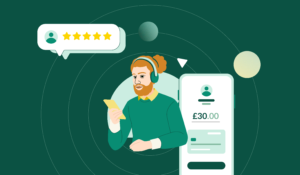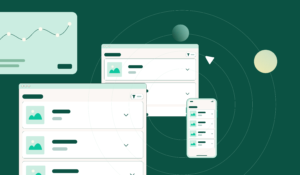How to recruit your first SaaS designer
Guides • April 10, 2024
How and why to build an in-house design capability.
Tl;dr
- In house designers deliver proven value to SaaS businesses but they cost, and need support.
- Recruitment agencies are expensive so if you’re bootstrapping, your best option is to do your own recruitment.
- Job boards like Workable, or the places where designers go for their creative fix such as The Dots, It’s Nice That, Dribble, Behance and Design Week are best.
- The best advertising approach: An honest advert that sells the vision for your business and your belief that design will help achieve it, whilst simultaneously helping candidates understand whether they are right for the role.
- In interviews, look for both rapport and a quality design portfolio to choose the best fit for your business.
- Have a career path in mind offering progression to board-level, to unlock the value of strategic design input.
If you’re unsure, we’re more than happy to help, with either some informal advice or more formal support in advertising and hiring. Get in touch here for a chat.
Design has become integral to the success of SaaS products. As a result the role of a designer, in developing both the product and the brand, has evolved into a continuous input rather than one-off contributions at key stages.
During the early stages of SaaS product development, the focus is usually on functionality first: Make the thing work and then develop the aesthetic. While UX is considered, it’s generally not until scale-up that founders can properly invest in design. Often bootstrapping developer-founders will use freelancers, or even do their own design, to get to ‘v1’.
Mckinsey conducted an extensive study to ascertain the value of strong design and found a striking correlation between financial success and greater shareholder returns. The success of design-led companies like Apple and Airbnb is renowned, but the power of strong design is not limited to B2C. In the competitive B2B SaaS landscape where brand and product UX are key differentiators, every business can take advantage.
Of course, even if you are a ‘design-led SaaS’, having the financials in place to hire a full time designer can be a challenge. So why do it? And what’s the alternative?
Every SaaS company needs design
We are obviously huge design advocates and would argue in-house design expertise is as valuable a resource as development, sales or marketing; but maybe you don’t agree so let’s look at the pros and cons.
Pros
- Always available: A designer on hand means there’s no need to source and book freelancers or agencies.
- Team and culture: A designer as part of your team will ‘get’ what you’re about and understand how you work.
- Company vision: Instilling the vision in them will bake it into everything they do.
- Strategic input. Strategic input from design leads to a proven ROI.
- A design system. An internal design system gives you agility in developing your product and marketing.
Cons
- Support. A junior to mid-level solo designer will still need someone to brief, manage and feedback on their work.
- Retention. If the company grows more slowly than anticipated, a lack of career progression opportunities might make retention difficult.
- Range of expertise. Individuals with a range of skills are rare and expensive – an expert logo designer may be challenged by the complexity of product UI and vice versa.
- Career path. If you want to keep your designer, they need to see career progression and that might be hard to define.
- Financial commitment. Good designers at all levels are hard to find and pay is a factor in attracting the best.
If you’ve decided that hiring a designer is right for you then read on – if you need a bit of persuading then we’re happy to have a chat to help you make that decision.
How to recruit a designer
So you’ve taken the decision and are ready to welcome a designer into your fold… good work! Let’s help you get there as painlessly as possible.
A good start is to try and get into the mindset of a designer. It’s not just about salary. What you stand for i.e. your vision, your values and the design culture you plan to build matter for prospective employees, especially if they are your first designer.
Recruiters vs DIY
Recruitment has a bad rep, a rep that’s not entirely fair! Many recruitment agencies will take great care to source candidates that fit your brief and are a good option to find you the designer you need.
But recruiters cost a LOT! You’re looking at 10-30% of the 1st year salary, a hefty chunk for a mid-weight designer on 40-50K.
The best recruitment agencies look at and have a view on designers’ work. Aquent gave me great help early in my career, offering constructive feedback on my portfolio and advice on the best roles. As a result they had the best designers in the industry on their books. So look for an agency that has a great reputation with designers and doesn’t commoditise talent, and you’ll get a designer that’s a better fit for your company.
If you’re a bootstrapper, then recruiters might be out of reach – so keep reading! The way I’ve recruited when running design agencies, whilst time-consuming, will save you thousands in recruitment fees.
Where do designers look for jobs?
First stop: Job boards (and services that post to multiple boards).
Workable offers just such a service along with a host of other features, including customisable re-shareable stand-alone job pages, and it has candidate sourcing capabilities such as interview booking and video conferencing. Definitely worth investigating. It’s fast and cost-effective at $99 per job advert p/month.
As a designer, I would trust a workable job advert; Workable is clearly a design led company and both ads and forms have that minimal but pleasing aesthetic that gets designers excited. Many successful companies where design is clearly a differentiator – Farewill, Gousto, Elvie – use it.
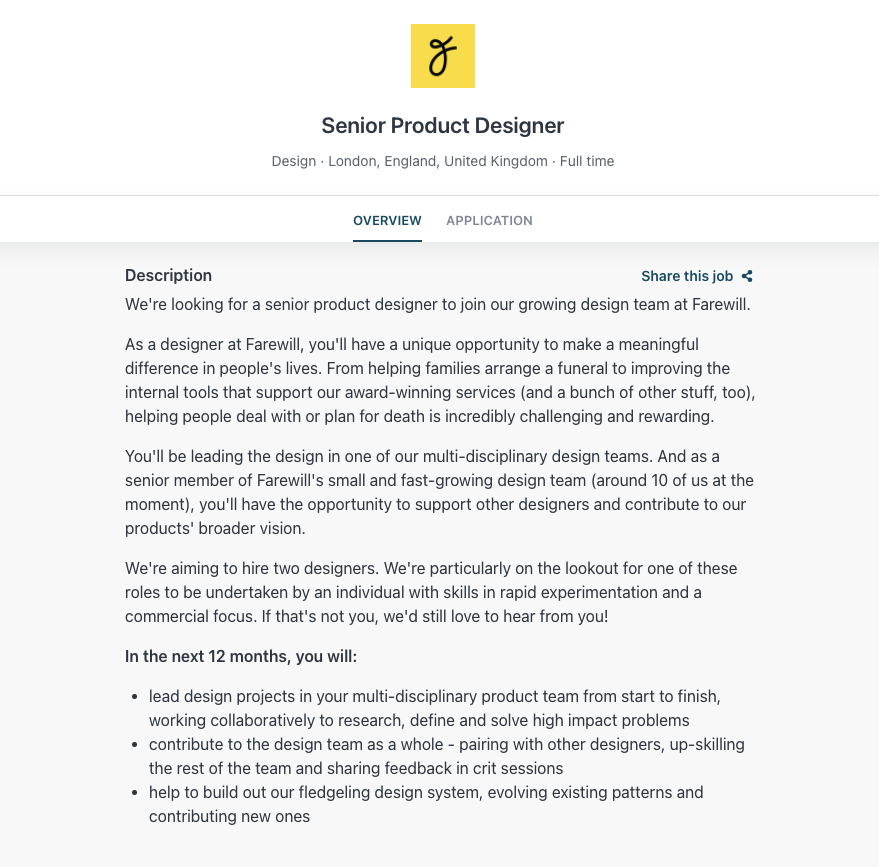
Alternatively, post a job where designers go for their creative fix. The Dots, It’s Nice That, Dribble, Behance and Design Week Jobs are just a few I recommend. Pricing varies, with most offering subscriptions or single and multi-job packages.
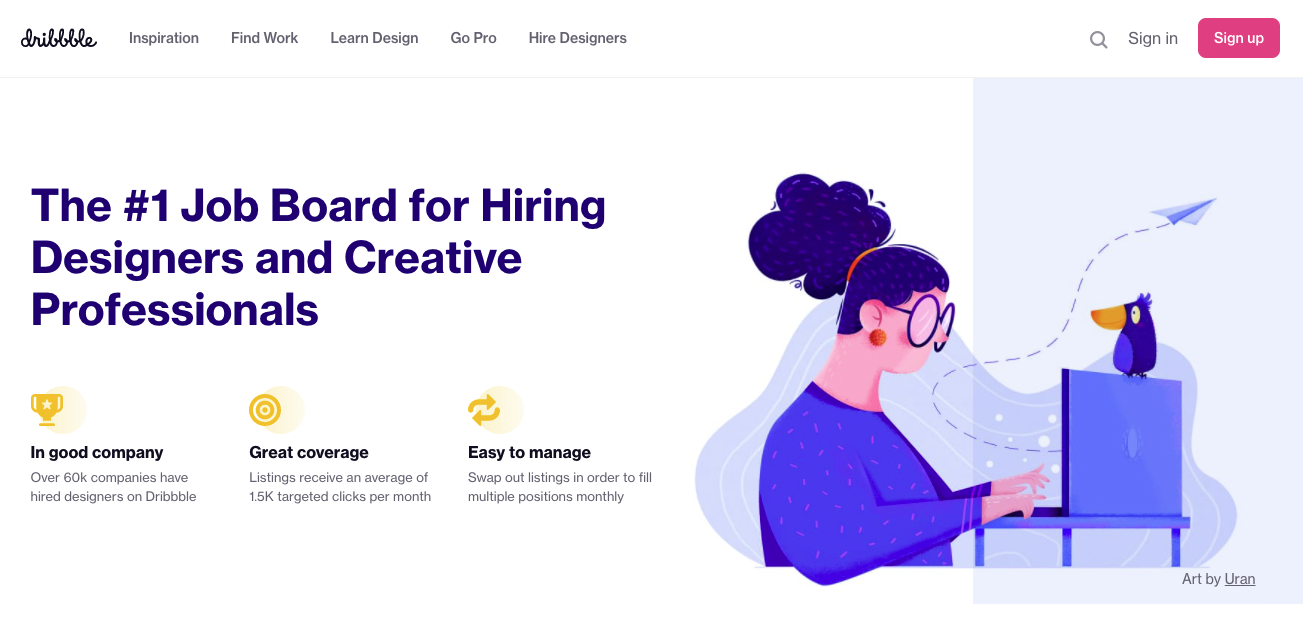
Every designer should have some of their work on Dribble or Behance and will certainly be looking for inspiration regularly so if you’re prepared to pay then put your advert on those sites.
You will be hitting your target audience so should get a good response but it still costs. Want to do it for free? Read on.
I’ve been using Indeed for several years and whilst it’s not a specialist designer job board it’s always yielded a good response from candidates and importantly you can post a job for free.
The dashboard allows you to post your job and then manage the rest of the process of including reviewing CVs and messaging candidates. It’s a good choice if you’re on a budget.
Writing a good job advert
This section could be a blog post in itself! If you’re from a discipline other than design and are in charge of writing this advert then what you might end up doing is copy and pasting from another advert for a similar role.
It’s not the worst idea and will certainly get your advert live quickly but what reads like a great advert for another company might not fit what the role with you really entails and what your company is about.
Again, it’s worth building a profile of what your ideal designer will be looking for and seeing how you can package what you need so that it appeals to them.
The key anatomy of good job advert are as follows:
Brief introduction
A short 20 – 30 words that summarises the job: who and what level the applicant should be, where it will be based and why you should apply. Succinct and punchy, it needs to capture the potential candidate’s attention quickly. As a designer I want to feel your enthusiasm for wanting to hire me and not just read a boilerplate intro to a job advert.
The role
My advice is to avoid lengthy technical skills bullet lists. Instead, focus on the handful of key areas the role entails. Your designer will probably work mostly on the product and the exciting new feature additions and/or refreshing your brand and marketing so set that scene. Convey your passion, and while it does need to be a little salesy, be honest. You don’t want to set unmeetable expectations and be left with an unhappy employee. This is the first step in your working relationship so you’ll need to deliver on these promises!
The role description is key to helping the candidate understand whether they have the skills for the job. It’s unlikely they will be good at everything, so help them filter and you as the employer will get a better quality of response.
Finally don’t ask for the moon! Understand that designers tend towards particular disciplines within the field and if the remit is broad, acknowledging that fact will reassure and ensure you don’t miss out on candidates as well.
The benefits
Beyond the salary what else can you offer? If you’re bootstrapping, pure financial incentives like bonuses may be beyond reach but what about flexible working, extra holiday at Christmas or weekly team lunches? Highlight perks that show you genuinely care! Oh, and a tip: Designers love toys! If you can offer a shiny new laptop or other goodies, such as tablets or software, mention it!
About the company
This is where you sell the dream of working for your SaaS! Don’t go overboard, but if you want to attract the high calibre of design talent that your product deserves, it’s worth articulating your vision for the company and how you see design helping you achieve it. A designer will want to feel you understand design even if you don’t currently have any designers. I want to believe in the product and the company I work for, so if I’m going to be convinced to apply for your role, I would want to be a little ‘wowed’ by your vision.
How to apply
Finally, how should the candidate apply and what should they provide.
A must for any designer is an online portfolio. If they don’t have one then alarm bells should be ringing! Things have moved on from standalone portfolio websites; good designers will often showcase their best work on platforms like Dribble and Behance, so a link to one of their profiles is just as good as an online portfolio.
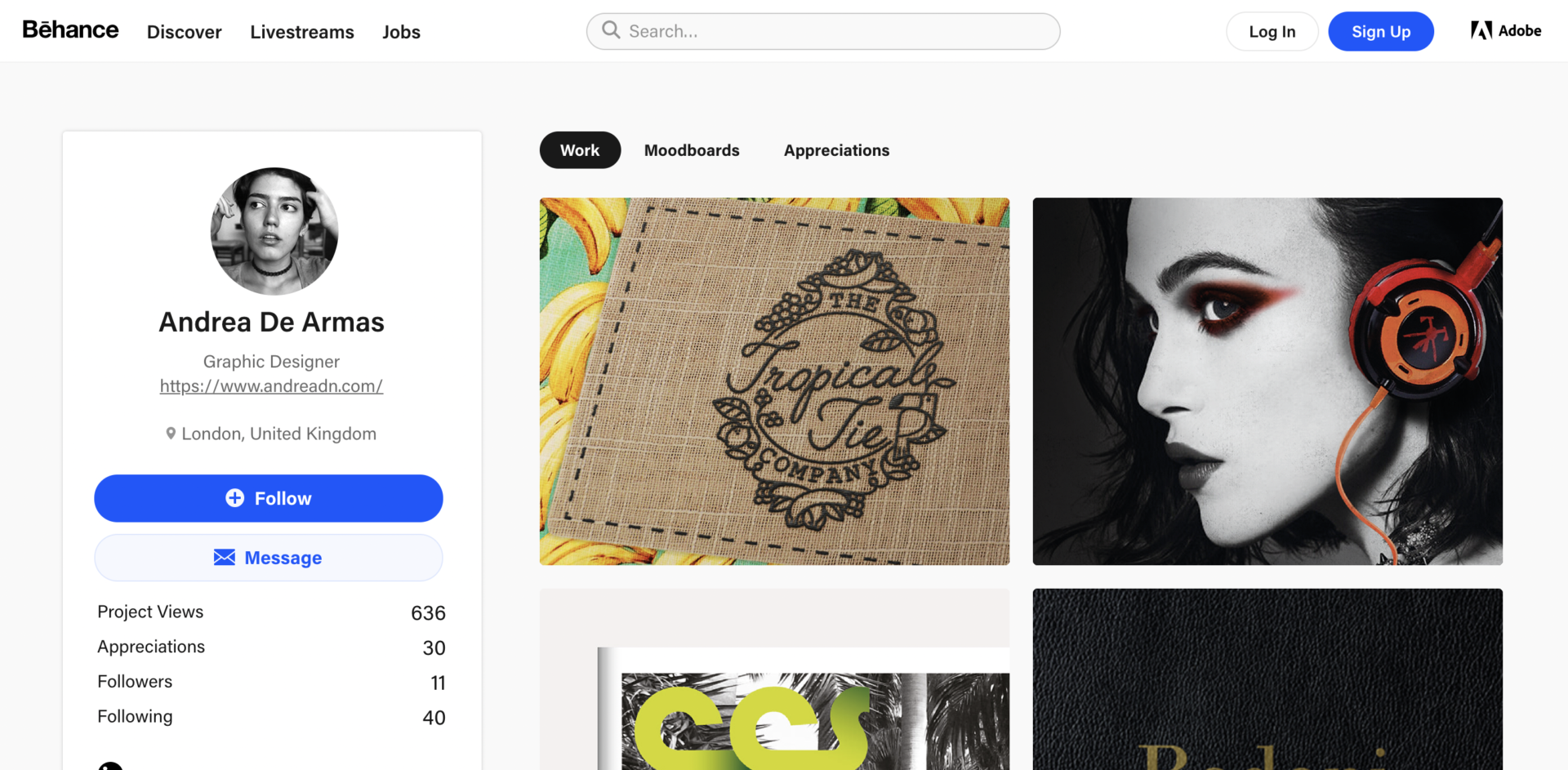
Reviewing your applicants
What do you look for in CVs and portfolios, once the applications start flooding in?
If you’re not from a design background you may find this bit daunting but even if you’re not aware of it, you will have developed an eye for good design during your time as a SaaS founder. Here are a few areas to focus on:
Design qualification
It’s not essential but if they have a Graphic Design or Multimedia degree then they should at least have had a solid grounding in the design basics. This doesn’t always hold true though and those without paper qualifications can have great design skills but if you’re looking for a basic filter this is one.
Portfolio
There are so many strands within design – service, UX, UI, brand, marketing – that you will need to make sure they cover what you are looking for. Ideally you will want someone who can do work across product, brand and marketing but that may be hard to find so work out what your greatest needs will be and focus on that.
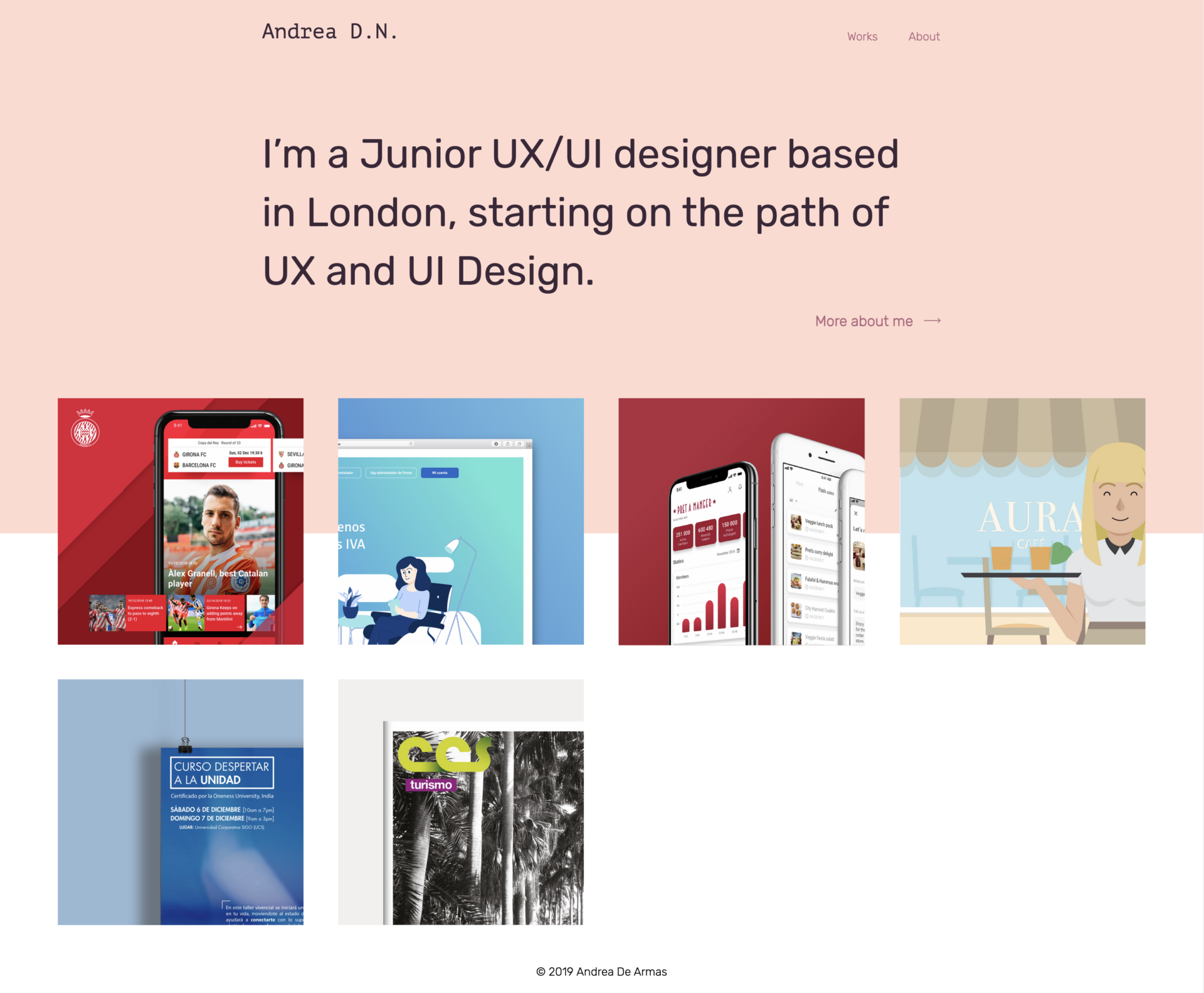
When reviewing portfolios try and enlist the help of a designer you may have worked with previously if you can – maybe shortlisting first and then getting their opinion. If you have to do it yourself then below are some criteria that has helped me when reviewing portfolios:
- Is the portfolio itself well presented? Whether on their own portfolio site or using a third party like Dribble – the portfolio should be well designed, the pride they have for their work should shine through in the layout of the case studies.
- Are they getting the basics right? Look at how they’ve aligned elements, relative type sizes, padding around elements and use of colour. If they’re not quite right then maybe they’re not experienced enough for you.
- Do the projects look like templates? The abundance of free design resources such as page templates, icons and illustrations mean it is quite easy to put together a design without doing any actual design. Look closely, does it feel like the brand they are designing for and do the icons look tailored to their use cases? Are there large amounts of lorem ipsum filler text? Often signs of template as opposed to original designs.
- Were they responsible for the design? The designer might have worked as part of a bigger team so something to check at interview is what they were responsible for. Just the UI or was it the UX too or vice versa – this should help you understand what they’re good at.
It’s critical you look carefully at what they’ve actually produced and after some time sifting through portfolios you’ll recognise what the work of a good designer looks like.
CV
How much work experience they will need obviously depends on the level you’re looking to recruit for. As a rough guide, junior designers will be graduates, up to 2 years experience; 3 – 5 years experience is a mid-level designer, and a senior designer will have over 5 years.
Of course it depends on what they’ve actually done in previous roles, but I would recommend that for your first design hire 2 years commercial experience should be the minimum requirement.
The interview
Take your time! Many people advocate hiring quickly, with the caveat that if they don’t work out you can let them go during the probationary period.. But after investing time, effort and money in the hiring process, do you really want to do that?
We use a 2 or 3 stage interview process at Vector with the option of a further interview if there are specific areas we want to check:
The 1st interview is a 10 – 15 minute intro by phone or video lets you ensure they understand the role and the interview process, and to find out when they can start. The key take away will be whether you have a rapport – if you don’t, it’s not the end of the world, but you’re likely to work closely so getting on is important.
I had a few first interviews before landing my first design job and the best were those where the interviewer put me at ease. Being relaxed allowed me to speak confidently and naturally, so they got to know the true me rather than my nervous interview persona.
If you’re looking for a junior then I recommend a test … a simple brief the candidate can execute in around 4 hours. Whilst this form of assessment is contentious for many designers, you will learn as much from the questions they ask and their approach to the problem as from the final execution.
The 2nd interview is a 60 – 90 minute deep dive into their work history, portfolio and career aspirations. We ask lots of questions and the interview is deliberately long so that it allows us to really get to know them. We’re not just interested in the answers they give, but how they respond to questioning. Their temperament under pressure is important to gauge as there will no doubt be times when you’re up against it in the work environment. If they’ve done the test piece, this is when we review it, giving us valuable insight into how they present and explain their designs (an important skill for a designer!). We can also see how they handle criticism and assess how they critique something you show them because they need to be good in both situations.
Remember you’ll need to do a bit of selling too! A new job is a daunting prospect so reassure them by describing the long term vision and your ambitions, and take time to understand theirs. As a designer I would want my employer to be interested in my career goals because they’re going to play a big part in helping me achieve them.
The 3rd interview comes into play if we’re pretty sure they’re the one, and can be anywhere between 15 and 30 minutes long. It can serve one of 2 purposes:
- To check team fit through a quick meeting with your business partner and/or colleagues
- If there’s something you’re not quite sure about and want to explore further.
They are likely to be joining a small-ish team, so taking that extra step can really ensure long term success; plus if they are in demand, it gives you an extra opportunity to show your enthusiasm for them. Of course it works both ways and a designer joining a new company, particularly if they’re relocating, might welcome the chance for additional time with the team.
What we look for in a designer
In a junior they have to get the basics of design right – layout, spacing, alignment, type and colour. Beyond that, it’s about their enthusiasm and their willingness to learn, which you can gauge in the critique part of the interview process.
For a mid to senior level designer, we’re really looking for a leader; someone who can shape our overall design approach as well as manage other designers. In addition to an excellent portfolio they need to be a superb communicator and persuader. Good ideas don’t get traction unless they can be articulated well!
Career path
How do you keep your designer engaged and continue to develop when they’re your sole designer?
We firmly believe design needs to be part of the fabric of SaaS businesses and that designers have a role in the C-suite. We live and breathe the benefits of design and see every day how design contributes to the success of SaaS businesses and we know that a strong design culture can reap tremendous rewards for your business, so we recommend creating a career pathway that gives your designer a route to a senior position.
Instilling that ambition in them will show them that you are serious about design. If they are junior, then you’ll probably hire a senior designer at some stage.Letting them know that will reinforce your seriousness.
How we can help
We genuinely want you to succeed in recruiting and retaining a superstar designer and here’s a few areas we can help with:
- Job spec and candidate review. We can create a job spec for you, review candidates and suggest potential interviewees.
- Interview support. We can join you during the interview process to act as a second opinion.
- Designer support. Once your designer starts we can provide support, in the form of design systems, working guidelines, design feedback and mentoring, providing a ‘virtual design team’ to bounce ideas off.
If there’s one takeaway from this article: Don’t be afraid to take this step but do it properly. Taking the necessary time and effort will yield great returns for you, your team and your business and will be well worth it.
We love that you are considering hiring a designer and we hope this article is helpful to you in achieving your aims!
